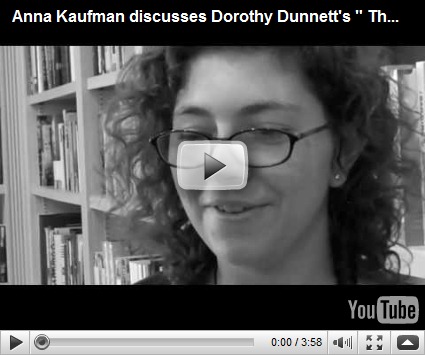We are in week 12 of the Group Read of Roberto Bolaño’s novel 2666. After finishing The Part About the Crimes we have now moved into The Part About Archimboldi.
My thoughts:
1. What to say? I’m really at a loss. I expected to like this section if only because I read, in multiple places, that the last Part was the best. But after the spareness of The Part About the Crimes we are now back to what I consider the “normal” Bolaño style in this novel and I’m finding myself unable to concentrate. I’ll read a couple of paragraphs and realize that my eyes have been moving across the page but I’ve taken nothing in. All these words. Ugh. ( I feel like the Emperor in Amadeus: “too many words!”). But all these words and nothing to show for it. Just like the first three parts. I find myself thinking “this BETTER be going somewhere” which isn’t at all the attitude to take with a novel.
2. This Part reminds me a bit of The Part About the Critics because it is a chronological telling of every minute detail of the life of a character. But at least in The Part About the Critics we didn’t start with the birth of any character; we started with their introduction to the work of Archimboldi and progressed from there. Here we are learning about the entire life of Hans Dieter in all of its incredible minutiae. Assuming that Dieter really is Archimboldi, maybe Bolaño is trying to tell readers not to get to interested in the lives of novelists because you’ll be disappointed at how boring they are.
3. Again, no good women characters. A teutonic baroness who has a lot of sex in Dracula’s castle which other characters watch through peepholes. Really. I’m not making that up. Another woman who likes bathtubs. A one eyed mother (that’s the only thing of interest about her, that she’s blind in one eye). Maybe she’s supposed to be some symbol of mythic fate? I think it was the fates who only had one eye between them and they passed it around. But if she is, it isn’t apparent to me.
By the end of this section of reading I decided that I am never reading another Bolaño novel based solely on his inability to write credible woman characters. Which may not actually be completely fair because he doesn’t always write credible male characters. I’m certainly not finding Hans Dieter credible. A small child who wants to stay underwater all the time? But at least Bolaño writes a few male characters in a way that makes them seem like fully developed characters and not caricatures. His women characters are atrocious. It’s not just that the men treat them like one dimensional beings – THAT may be a point of the novel that is worth considering – but that Bolaño doesn’t write them in any way that makes them more than caricatures.
I do keep coming back in my mind to the first part in which Bolaño had the woman critic, Norton, end up with the one man who actually listened to her and their relationship was not solely about sex. I didn’t think Norton was a well written, well developed character. But she’s the only woman in this entire novel who seems to have ended up with a man who tried to understand her and not have her fit into his own idea of what she was.
4. Lots and lots of words. Words that seem completely superfluous. Descriptions of underwater plant life that go on and on. And on and on. Why? Because Hans Dieter’s favorite book is a book about underwater plant life and he can’t stop himself from swimming around underwater.
5. Now that the Part About the Crimes is over I find myself trying to construct the timeline of the novel in my mind and going back in time to the 1920’s just makes me frustrated. But since Norton is the only character that ends well, I find myself hoping that her story is the end of the timeline. This is probably a false hope since this is, so far, not a very hopeful novel. But since some of the other readers have compared it to Pulp Fiction that is what comes to mind for me. A lot of violence and death but some hope at the end. If you can figure out where the end really is.
But on the whole I really can’t think of anything good to say about this particular week’s reading. Except that it’s finished.
I think part of the problem is that I liked The Part About the Crimes. I didn’t love it. It was horrific in some ways. But despite the constant, repetitive descriptions of the murdered women it had a force, an energy about it. It felt like Bolaño was excited to be writing it. That he was trying things. That he was trying something different. I don’t think he succeeded, but he tried. There is no way that The Part About the Crimes could be published by itself as a solo novel and be successful. Most people wouldn’t get past the first 10 pages. In some ways it is the contrast of the style of The Part About the Crimes with the style of the rest of the novel that gives it context, that makes it work to the extent that it works. But now we’re back to the same old thing.
The plain fact is that I just don’t get this book. And I don’t like it enough to try to get it.
I feel particularly whiny this week but I thought maybe the last Part would make it all come together and so far I’m not seeing that. I feel … disappointed.

